Many and countless have been the struggles witnessed by this planet. And countless are the bodies and structures that have turned to dust and ashes in the heat of those battles. But the impact of war has many repercussions. Among them, a silent victim; the environment.
Besieged populations, trampled landscapes, casualty counts, infrastructure destruction, shell and missile launches, heavy artillery fire, photographs of tanks and rocket launchers in action… Such are the wars. A kind of death and fall bank where losses are counted in hundreds and thousands, shielded behind military maneuvers. Where hunger, thirst, and vulnerability are as much intrinsic to the dust, rubble, and debris as are collapsed hospitals, downed aircraft, vanished peace, and ruined plantations.
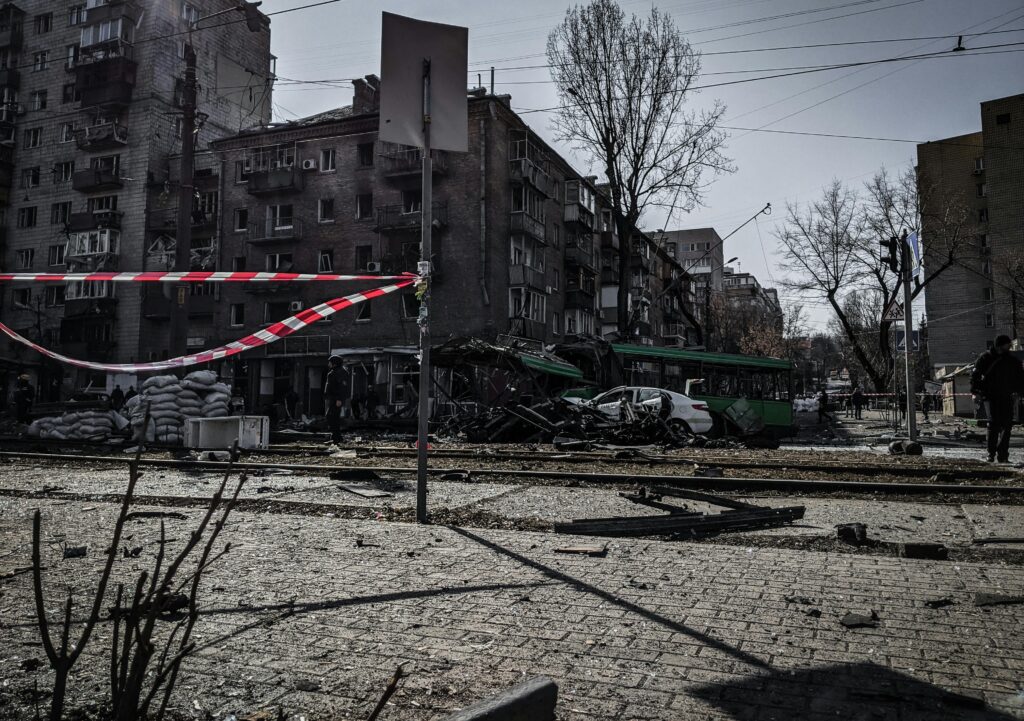
Why do we talk about the impact of war and what exactly do these words imply?
More than a volcano, a hurricane, or an earthquake. Every war is a whirlwind of destruction that ravages everything in its path, spirits and human lives included, of course, but also strongholds of flora and fauna, and that is a fact.
And thinking that war and its aftermath only affects and involves people, exclusively, is as selfish, egocentric, and naive as it is false and incorrect, and very, very short-sighted. We are talking about a type of conflict that, in its tally of evils, does not distinguish between night and day or land and water, after all, and that when it comes to striking, does not hesitate to sweep away forests and rocks, animals and plants, water and soil.
What is the impact it has on the environment?
It is true that assessing the impact of militarization on the climate crisis, always with a count of CO2 emissions, is quite complicated, limiting its in-depth study, especially after they were excluded from the Kyoto Protocol in 1992. Initially, in 2005, it became a mere voluntary report for countries, in admission and concession to the Paris Agreement.
Currently, in fact, these are data that national governments sweep under the rug of other categories, always within the codes contemplated by the Intergovernmental Panel on Climate Change, or so it seems from the protest that the research group Concrete Impacts issued some time ago through its official website.
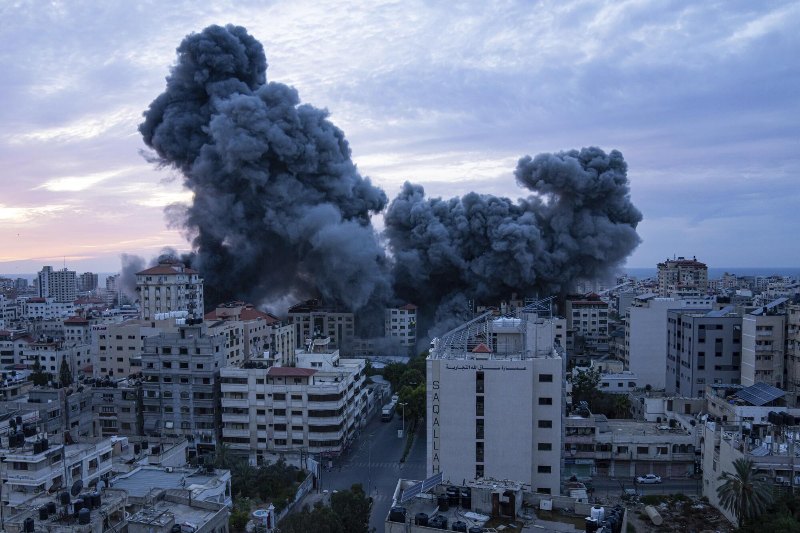
Judging by what this group of experts denounced, while some countries use a supposed need for national security as an excuse to avoid publishing their emission data, other state regions cheat and do not detail their military emissions in the Intergovernmental Panel on Climate Change (IPCC) category, the correct one; opting instead to camouflage it among search and rescue or even civil defense emissions.
And despite all these tricks and the determination of countries to hide their data on military pollution, it is undeniable that they exist and are impossible to completely conceal, and that is an open secret. So much so that gone are the days when the aftermath and repercussions of armed conflicts were only measured in human tragedy.
The impact of war and climate change
Unfortunately, society has not lacked wars and post-war periods in its history. Century after century, bloody traces have been spilled, with which to open our eyes and realize that the environment has not been (nor is it) a mere spectator of our way of killing each other, no matter how far removed it may remain from the human sense of inflicting violence and destruction.
Yes, the outbreak of war is, for nature, a period of suffering where its environment and the systems that manage it degrade rapidly and visibly, with actions that involve danger and jeopardize the biodiversity of its ecosystem. In other words? Climate change and more climate change.
he detonation of over 2,000 nuclear bombs that forced forests to alter their geography. Also, the ancient practice of dumping weapons and ammunition into the sea, releasing toxic compounds that further endangered the life and survival of marine ecosystems. Not to mention the radioactive shadow that still unsettles the composition of the atmosphere.
Human beings as the main culprits
The examples are many, indeed, countless.
And all share the accusatory finger pointing towards humanity, responsible for causing them. Proof of this is the many analyses and investigations that can already be read from the focus of environmentalists. Who have tirelessly described and dissected the impact of war on the soil, the oceans, and the atmosphere itself.
However… Has this been enough to change the way we look at and fully realize the damage to the environment? Has it been sufficient to protect the ecosystem? The answer to both questions is a resounding no, unfortunately.
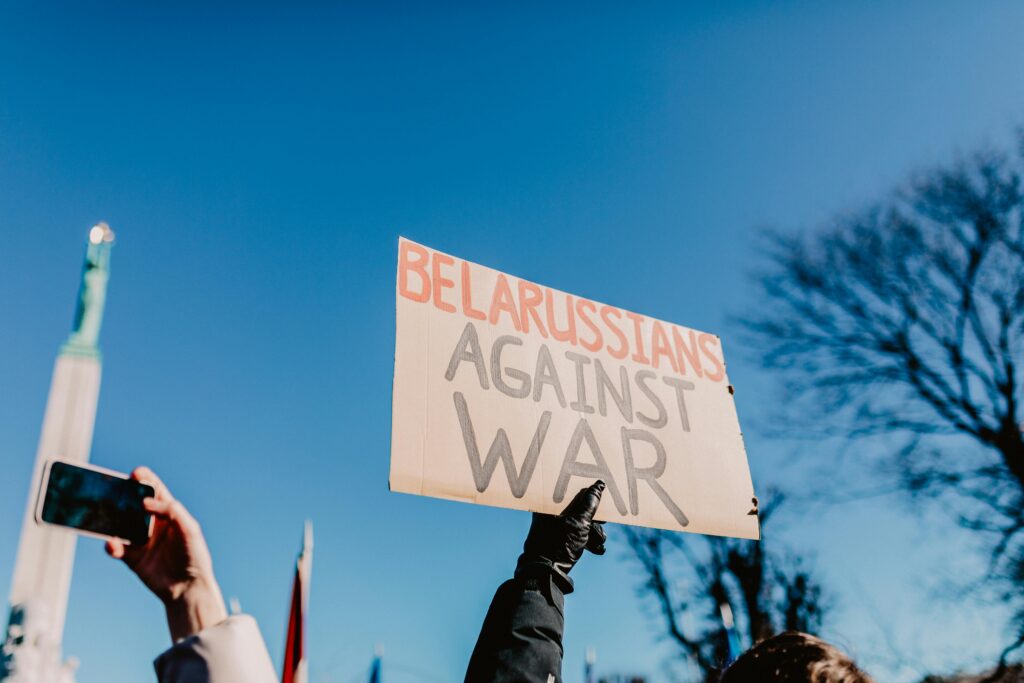
Then, can we talk about the impact of war on the environment?
Chloé Meulewaeter, Ph.D. in Peace Culture from the Centre Delàs d’Estudis per la Pau and current director of the Ibero-American Alliance for Peace (AIPP), is very clear about it, and her answer is a resounding yes. In the opinion of this expert, there is no armed conflict that does not threaten the diversity of the ecosystem. It doesn’t matter how a guerrilla rampage is unleashed, whether it is executed by air, sea, or land. It does not hesitate to leave the soil barren and to contaminate the aquifers. In a process of weakness whose aftermath lasts for years. Eliminating or seriously injuring native flora; and all this while killing or injuring or forcing the displacement of local fauna.
Meanwhile, for the United Nations General Assembly (UN), it asserts that armed conflicts on a civil or global scale do indeed have a significantly negative impact on the ecosystem and nature. Proof of this is the attention and awareness-raising that this entity calls for every year as a global commemoration. Especially since 2001, when it declared November 6 as the International Day for the Prevention of the Exploitation of the Environment. Thinking about both war and armed conflicts.
What efforts are being made to counteract the impact of war?
Did you know that 40% of all armed conflicts unleashed in the world are related to the exploitation of natural resources? And that’s at a minimum. This is asserted by the UN within the lines of its Environment Programme. It emphasizes that this abuse of nature is practiced in the name of excessively profiting from it. Whether it be oil or gold; two major greed fevers afflicting humanity. This exploitation also involves other resources such as water, timber, and soil fertility.
The United Nations hasn’t been the only reputable entity to acknowledge that there is indeed an impact of war on the environment. In the records of the CEOBS or Conflict and Environment Observatory, what we know in Spanish as Observatorio de Conflictos y Medioambiente, a classification of human battles and their many setbacks to the ecosystem is even compiled.
The most peculiar aspect of this study turned archive? The impact of war is classified into three modalities, at least in the eyes of this entity. Namely, those prior to the conflict itself, those that occur simultaneously, and those that occur afterward, those that persist even after. Three types of traces that accumulate and feed into each other, eventually becoming an indelible wound that leaves the Earth injured, battered, and limping.
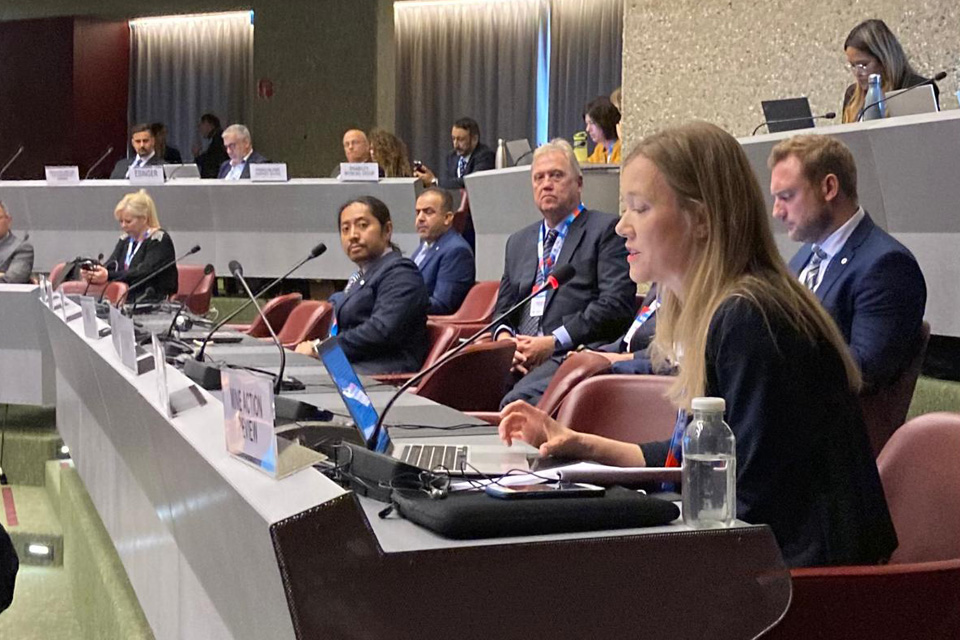
The construction of military resources is one of the pre-war impacts of any conflict
According to the aforementioned study by CEOBS, along with the maintenance and transportation of such military forces. On the one hand, as well as subjecting the soil to continuous military testing, on the other hand. An example of this? The fact that 1% of the Earth’s surface, no less, is used as a training ground for an army, as indicated by both Rick Zenteiz and David Lindenmayer in their study “Bombing for biodiversity”.
To understand why this armed use of the soil is so toxic for the planet, it’s important to consider that each military training disrupts natural landscapes, releases emissions into the air, and even alters marine and terrestrial habitats, as denounced by the International Dialogue on Underwater Munitions.
In other words? Military training equates to more environmental impacts. Examples include noise and chemical pollution, both from military explosives and army vehicles, which release waste and CO2 emissions, consume fossil fuels, and drain vast amounts of resources.
Adding to this military occupation of natural lands is a greater vulnerability to human-caused disasters for these areas. While this doesn’t apply to all military zones (to be fair), many of these training grounds hinder, if not directly block, neighboring rivers, valleys, or mountains from enjoying greater protection under the status of protected ecological zones. This vulnerability translates into incidents, damage, waste, and destruction.
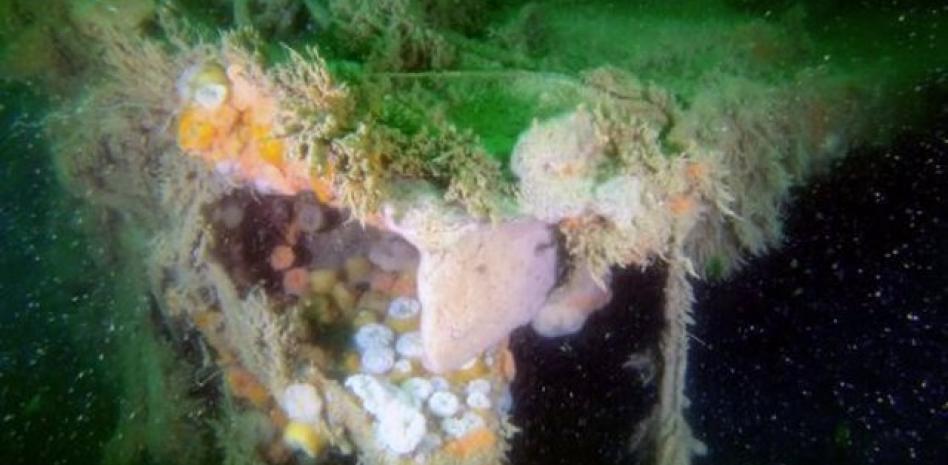
A stab to the heart of the earth
From the Vietnam conflict to the strife in Yemen, and through the war in Ukraine. But the dark history of the impact of war doesn’t end here. Not even at the pre-conflict level, as the damning evidence also implicates the seas, which end up as dumping grounds for ammunition. And although in 1972 the prohibition on hiding military remnants in ocean waters came into effect, thanks to the implementation of the Oslo Convention, today there are still many military remnants lying sunken on the seabed, transformed into what we mentioned earlier, military waste.
Discharges that, in turn, carry large amounts of chemical compounds that seep into the ecosystem of marine fauna and flora, exposing these areas to high contamination.
Case in point, the Yemen war has been a perfect example of how to ruin the vegetal imprint. As highlighted by SCIDEV magazine in its exploration of Yemen’s forests and the fuel crisis still plaguing the country today, in line with its editorial focus on bridging science with development, and reflecting it in news and analysis.
Adverse effects
In summary, we’re talking about a war where new levels of deforestation were reached. How so? By the disappearance of political stability and economic foundations, which pushed the population into poaching for food. It also prompted them to plunder any source of wood and charcoal, in order to combat the cold and scrape together some heating.
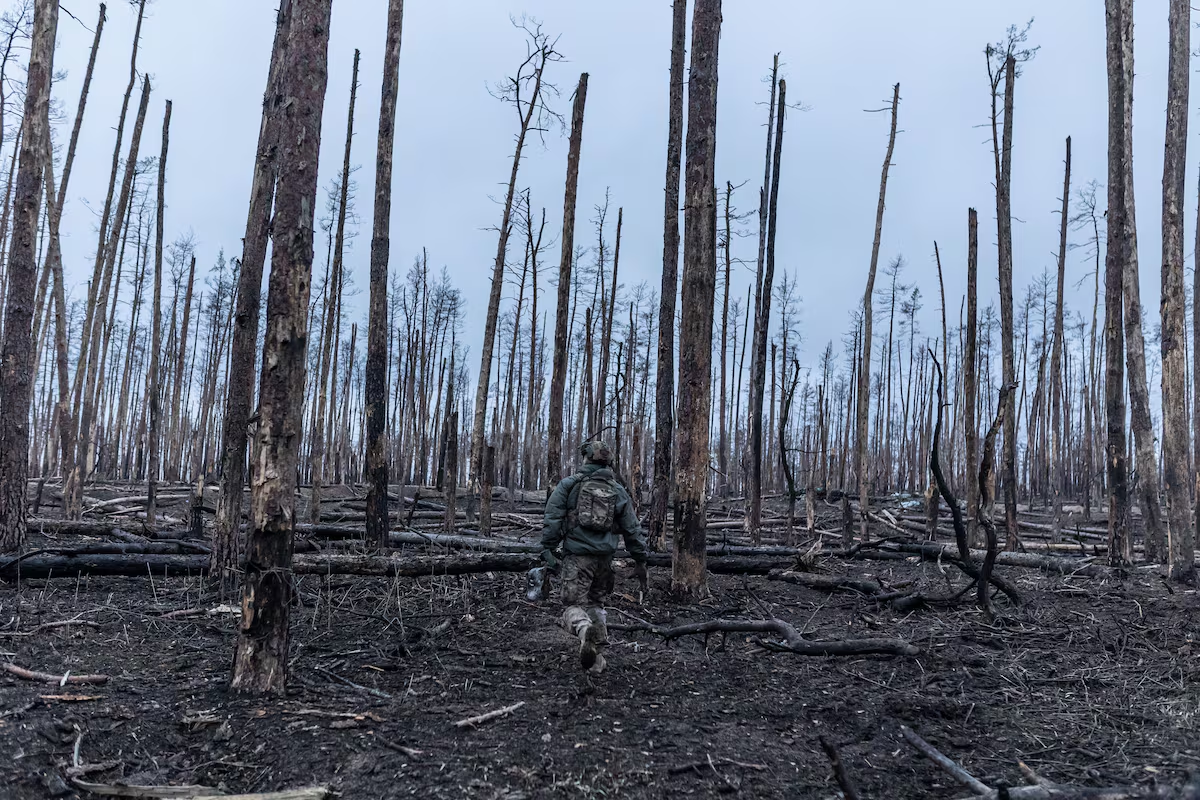
Cutting down trees and burning crops was also done as a way to weaken the enemy. However, in the search for food and warmth, it became synonymous with dependence. This practiced dependence, when consumed, turns against the already vulnerable atmosphere by increasing the amount of gas emissions, especially greenhouse gases.
Is it better to cut down trees and get wood to burn than to die of cold? Yes, of course, especially with the survival instinct at stake. But this impact of war leaves a footprint that accumulates in the air, poisoning nature. Endangering the survival of the environment, weakening the ecosystem and, consequently, harming the flora and fauna that breathe it, condemning many of them to extinction.
More examples of the impact of war on the environment?
The way in which the marshes of Mesopotamia were reduced to a salt desert. Likewise, when they fell into the hands of Saddam Hussein’s army during the Iraq War. We are talking not only about a natural landscape, but also one of the largest wetland ecosystems in the Middle East. Marshes that received such a blow of drainage that only about 10% of their extent barely survived.
The emergence of Agent Orange was another terrible example of humanity’s insistence on disrupting the ecosystem through its conflicts. This unforgettable protagonist of the war that fragmented Vietnam from 1961 to 1971 was a chemical product used to destroy the fertility of a vast area of land in the southern part of the country, in order to create a pathway through the jungle for the military, and in the process, it managed to destroy a large portion of the region’s forests.
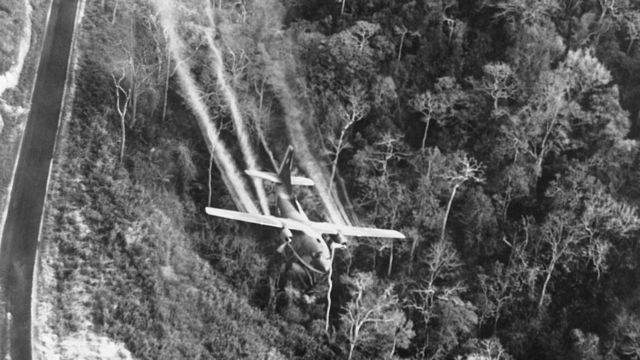
The most recent stronghold of the war’s impact on the environment is the Ukraine War. However, this conflict, which has been active for over two years, has already accumulated unforgettable ecological crimes, such as the destruction of contaminated water reserves in May 2022, after subjecting them to a rain of bombs. To make matters worse, toxic waste ended up contaminating and poisoning the drinking water plants.
When the ceasefire does not put an end to the abuse against the ecosystem.
It is also worth noting that on the list of post-war impacts, water pollution stands out. Chemical substances seeping through the soil taint the water. As highlighted by the Conflict and Environment Observatory, this toxicity practically translates into another source of crop loss.
Just as with the domino effect, a decrease in crops leads to fewer sources of food production, resulting in famine. This hunger crisis drives population migration and compresses them into refugee camps. A massive number of settled people, in turn, burdens the land and overwhelms its carrying capacity and ecosystem.
All these manifestations of environmental consequences that take shape in the threat of the impact of war add to other non-ecological dangers of human beings. The ecosystem is forced to fight for its recovery and stability, also doing so against all odds, in a battle that has been fought for decades.
Indeed, this is what happens with trawling fishing, which only serves to devastate the seabed; or with mining, which is unhesitant in rupturing the environment in open-pit operations; and even with mass livestock farming, which suffocates the biosphere by inundating it with monocultures and pesticides, thus destroying and contaminating its biodiversity.
Let’s address the million-dollar question today!
In conclusion, from this overview of the impact of war and the many forms this danger can take, it can be said that every armed conflict between people is a wound that takes time to stop bleeding, yes, but even more time to heal; a shattered plate that also ends up paying a toll on the biosphere, undoubtedly, as the repercussions of its shards become nearly irreversible damages, unfortunately, even long after the cannons have ceased their bombardment.





